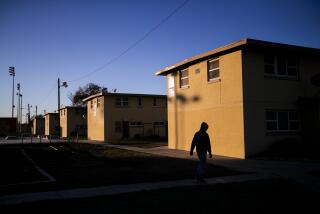Take a Healthy Interest in Testing for Hazardous Lead
If you are a health-conscious renter, you probably spend a considerable amount of time and energy keeping fit and watching your diet. But have you considered the potential health hazards in your home?
When it comes to making sure your apartment is safe, you can’t rely on government laws or your
landlords to protect you from environmental hazards. You need to be on top of things and alert your landlord (or the appropriate authorities if your landlord is unresponsive) of potential dangers.
Most state landlord-tenant laws require landlords provide tenants with habitable housing. These laws were written to ensure your apartment isn’t falling apart and comes with some basic services, such as heat and running water.
However, many landlords who work to make sure your home is habitable do not always consider the many environmental hazards that are difficult to detect on their properties
For this reason, a health-conscious renter should take the time to understand the potential risks and even be willing to pay for testing when landlords are not legally required to test. Just as a potential homeowner might conduct tests for hazards before buying a house, it’s important to consider what you need to do to be safe in your rental.
And when you have good reason to believe an environmental hazard exists in your building, you need to alert your landlord immediately in writing.
“Once the landlord knows about it, he has to take steps to remedy the situation, even if that means temporarily evicting tenants to alternate housing,” says attorney Janet Portman, coauthor of “Every Tenant’s Legal Guide,” published by Berkeley-based Nolo (https://www.nolo.com). “Otherwise the landlord will be liable for tenants’ injuries.”
Most landlords will act promptly to any dangerous situation. But when landlords refuse to act, you have to decide whether to report the landlord to the appropriate authorities, go to court or simply move out and move on.
Lead is one of the most insidious hazards and can have dire consequences for children younger than 6. One out of every 11 children in the U.S. (approximately 1.7 million) has unsafe blood lead levels that can cause brain and other organ damage. Adults can also suffer from lead’s poisonous effects.
Buildings built before 1978 (when lead was banned from paint) are most likely to have lead contamination. Even in apartments built after 1978, you need to worry about lead because it can show up in drinking water or the soil around the house if you live close to a heavily traveled road.
When you rent an apartment, the landlord is legally required to tell you whether lead paint has been discovered in a pre-1978 apartment (studio apartments are exempt). The landlord also has to give you an Environmental Protection Agency pamphlet called “Protect Your Family From Lead in Your Home.”
Your landlord must also notify you before doing any renovations that disturb lead paint.
“If the renovation disturbs more than 2 square feet of space, the EPA requires renovators to give tenants the disclosure form and the EPA pamphlet,” Portman said.
What the federal laws do not do is require that landlords perform lead tests. They only need to tell you whether lead paint has been discovered in the past at any time.
This puts tenants with young children in a difficult position. If you have young children and your landlord does not know whether lead paint exists in the apartment, you need to decide whether to perform your own tests. Lead testing can be expensive. You can buy inexpensive and less-accurate lead tests at the hardware store, but to be sure, you need to pay an expert a fee (typically $100 to $200).
If any tests are positive for lead, inform your landlord in writing right away.
Unless your building was certified lead-free, don’t take any chances if you have young children and live in a pre-1978 building. Assume there is a danger and watch out for problems such as peeling paint or paint dust falling from friction points on windows or doors.
Vigilant cleaning is also key. You can use a special cleaner made for lead that’s available in hardware stores The EPA’s “Protect Your Family From Lead in Your Home” has more tips for living with lead paint. Landlords can be fined if they don’t give you a copy of this pamphlet when you rent or renew a lease. They also need to give you a copy before any renovation. To obtain a copy of this pamphlet, call the National Lead Information Clearinghouse at (800) 424-LEAD.
Parents should also consider getting a simple lead blood test for young children to be sure they don’t have dangerous levels of lead. Insurance plans often cover these tests.
If your child has an elevated blood-lead level, your landlord has a responsibility for making your apartment safe to live in. The landlord doesn’t have to remove all the lead paint but should take steps to eliminate the risk, such as wallpapering or safely repainting over cracked or peeling lead paint.
If your landlord refuses to act, seek legal advice, especially if you have a young child. Paint isn’t the only source of lead problems in homes. Your tap water can also be a significant source of lead poisoning.
You can test the water or ask your landlord whether any testing has been done. If you discover lead, notify your landlord.
If your blinds were provided by your landlord, ask where they came from. If they are vinyl, non-glossy and came from China, Taiwan, Mexico or Indonesia, they could be dangerous for children.
*
Next week: Carbon monoxide, asbestos and radon.
*
Distributed by Inman News Features.
More to Read
Sign up for Essential California
The most important California stories and recommendations in your inbox every morning.
You may occasionally receive promotional content from the Los Angeles Times.






